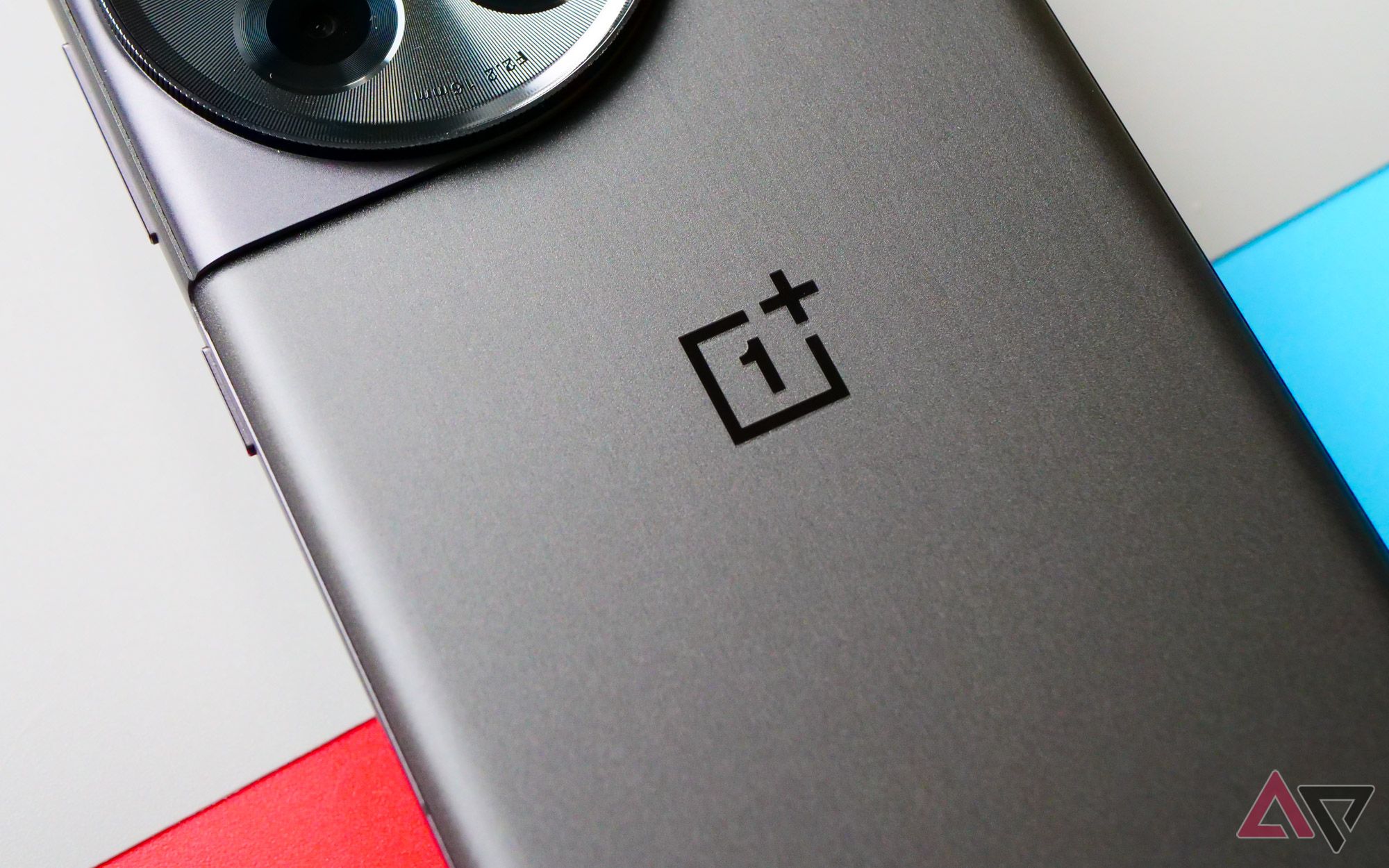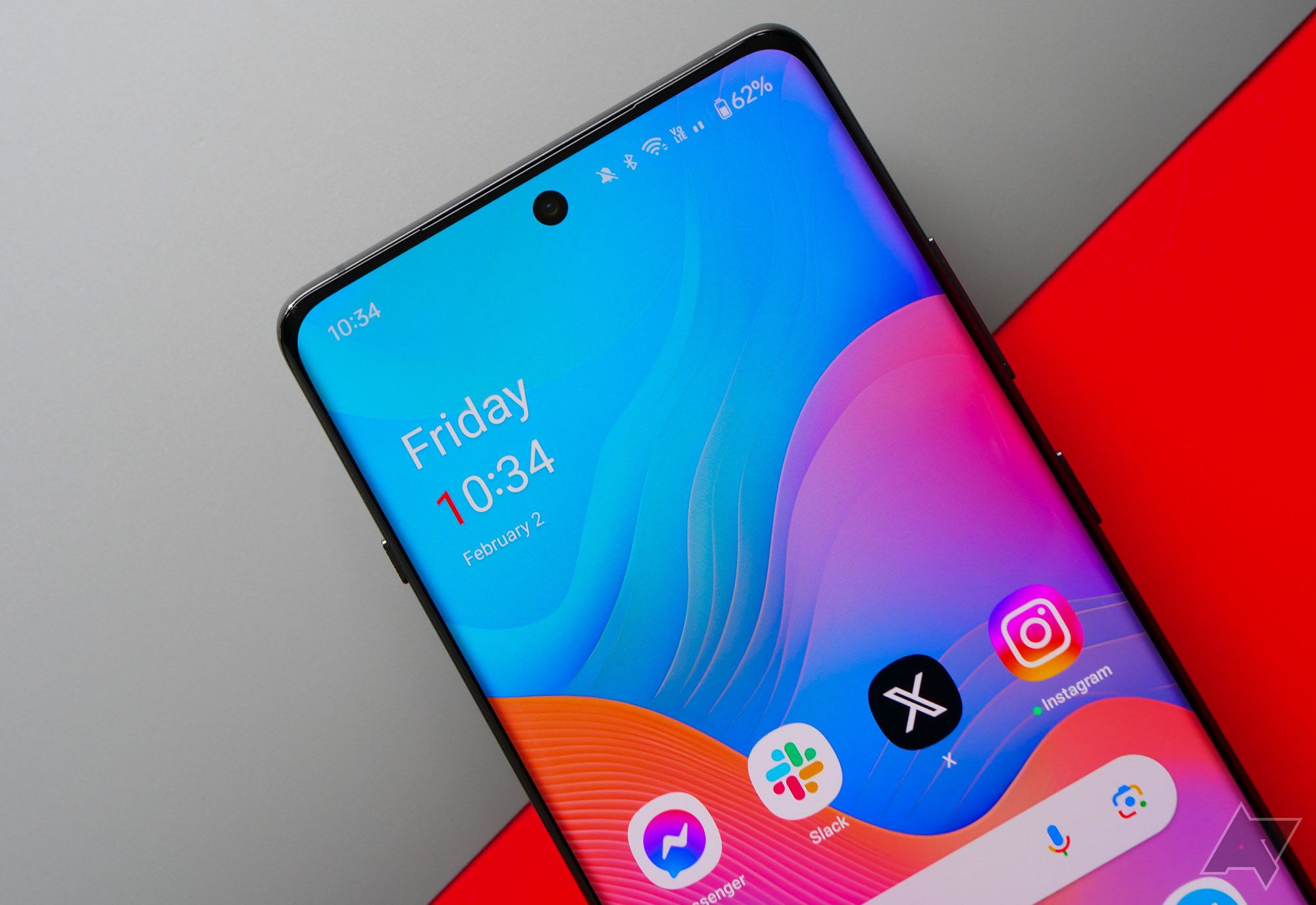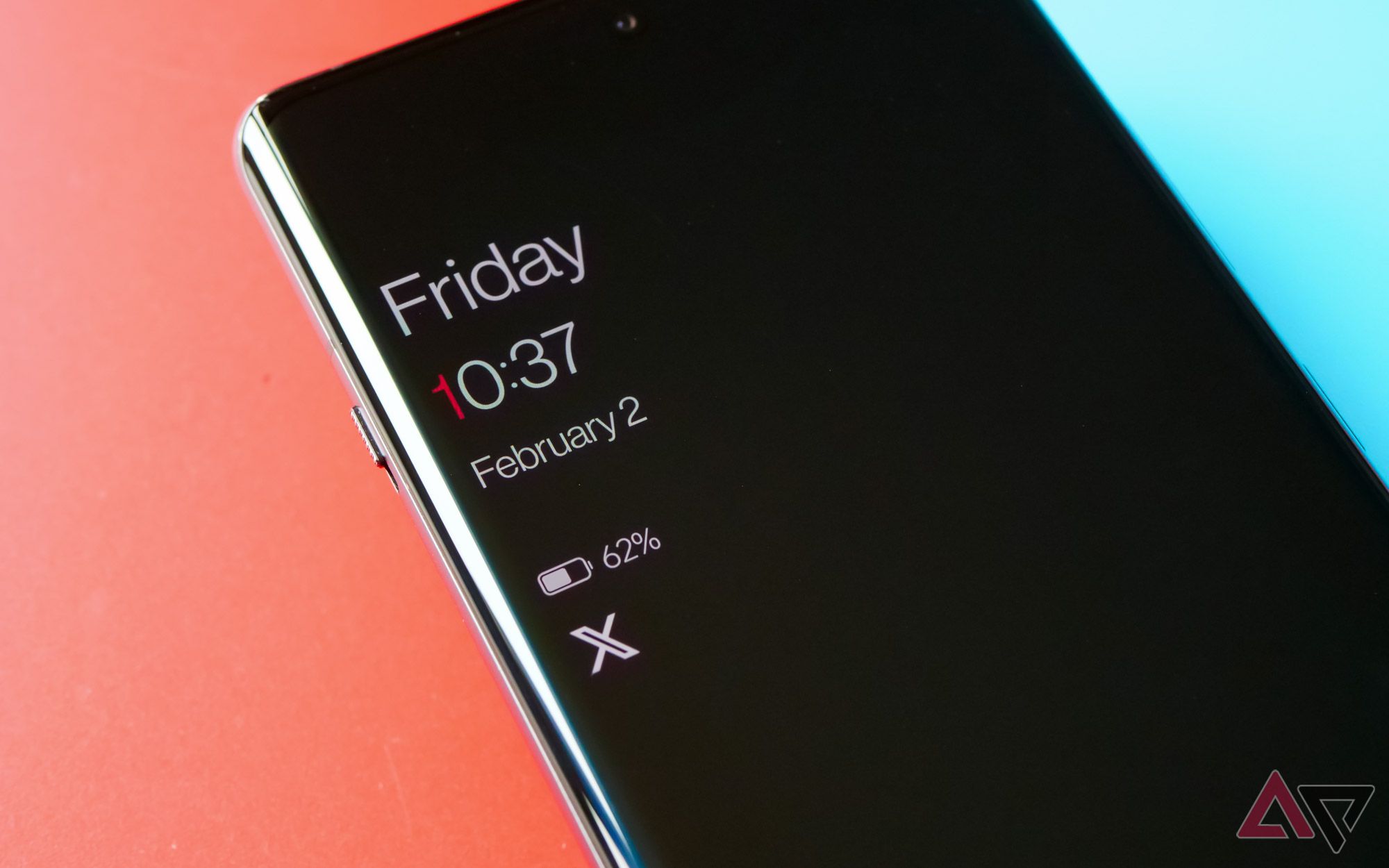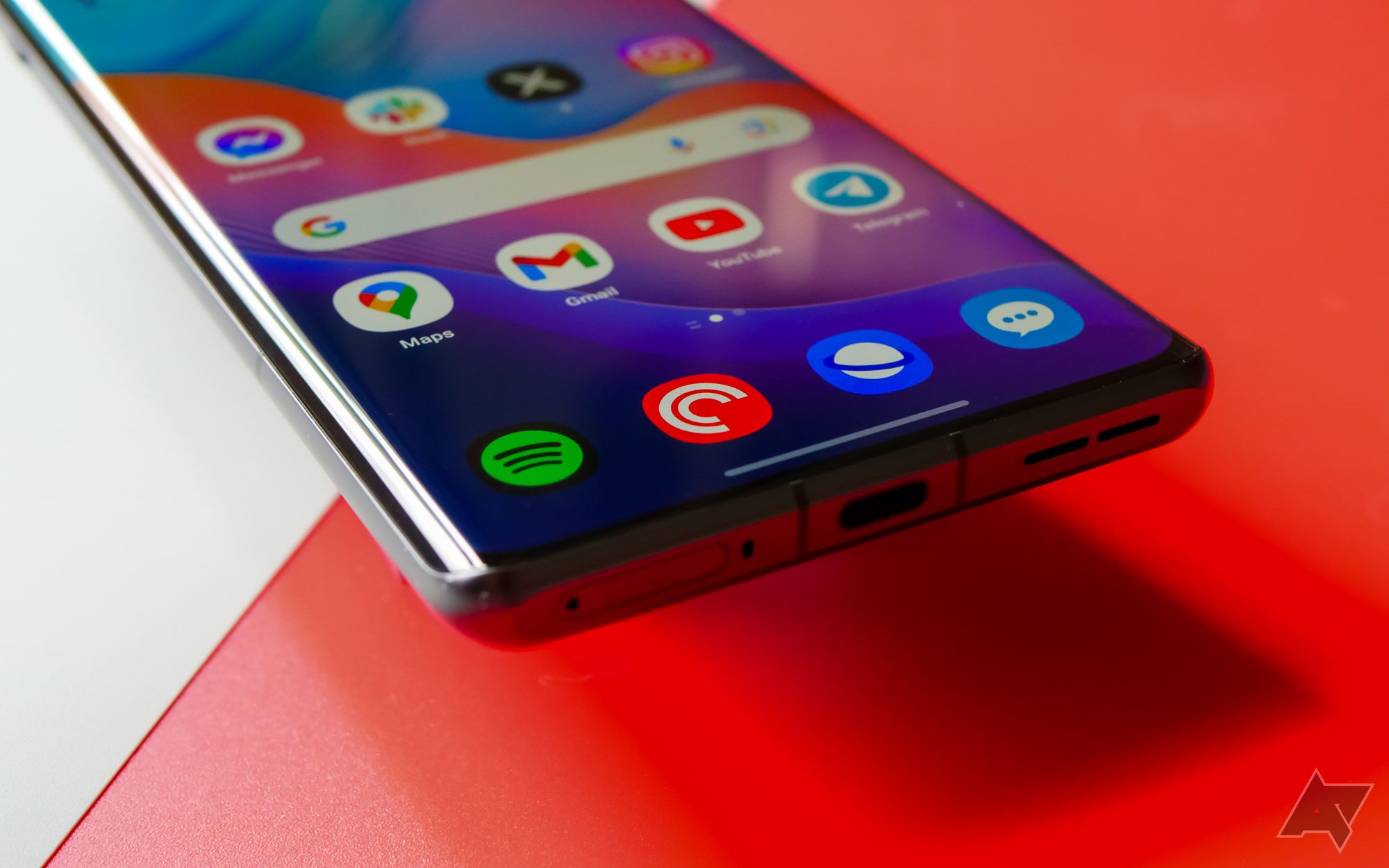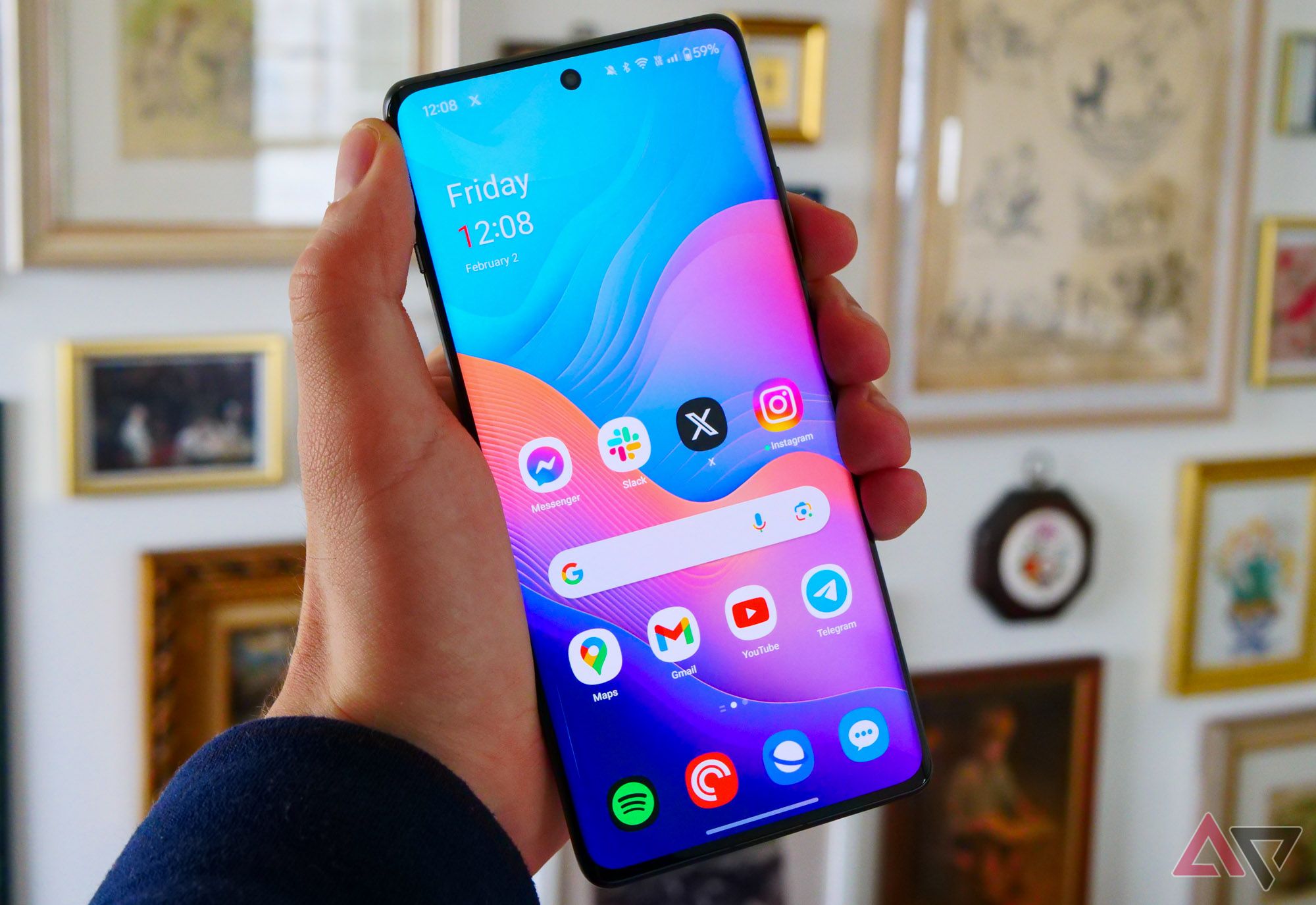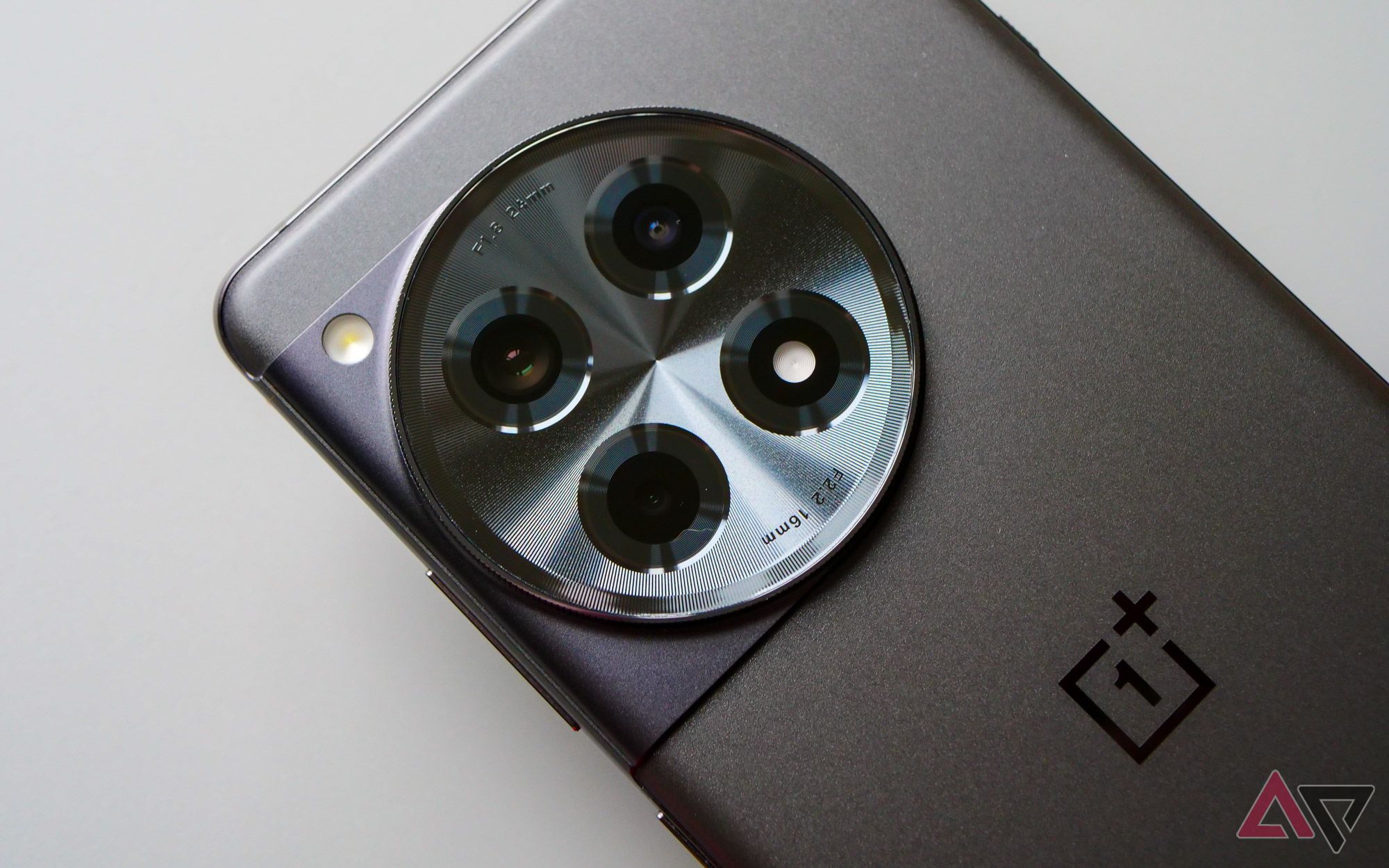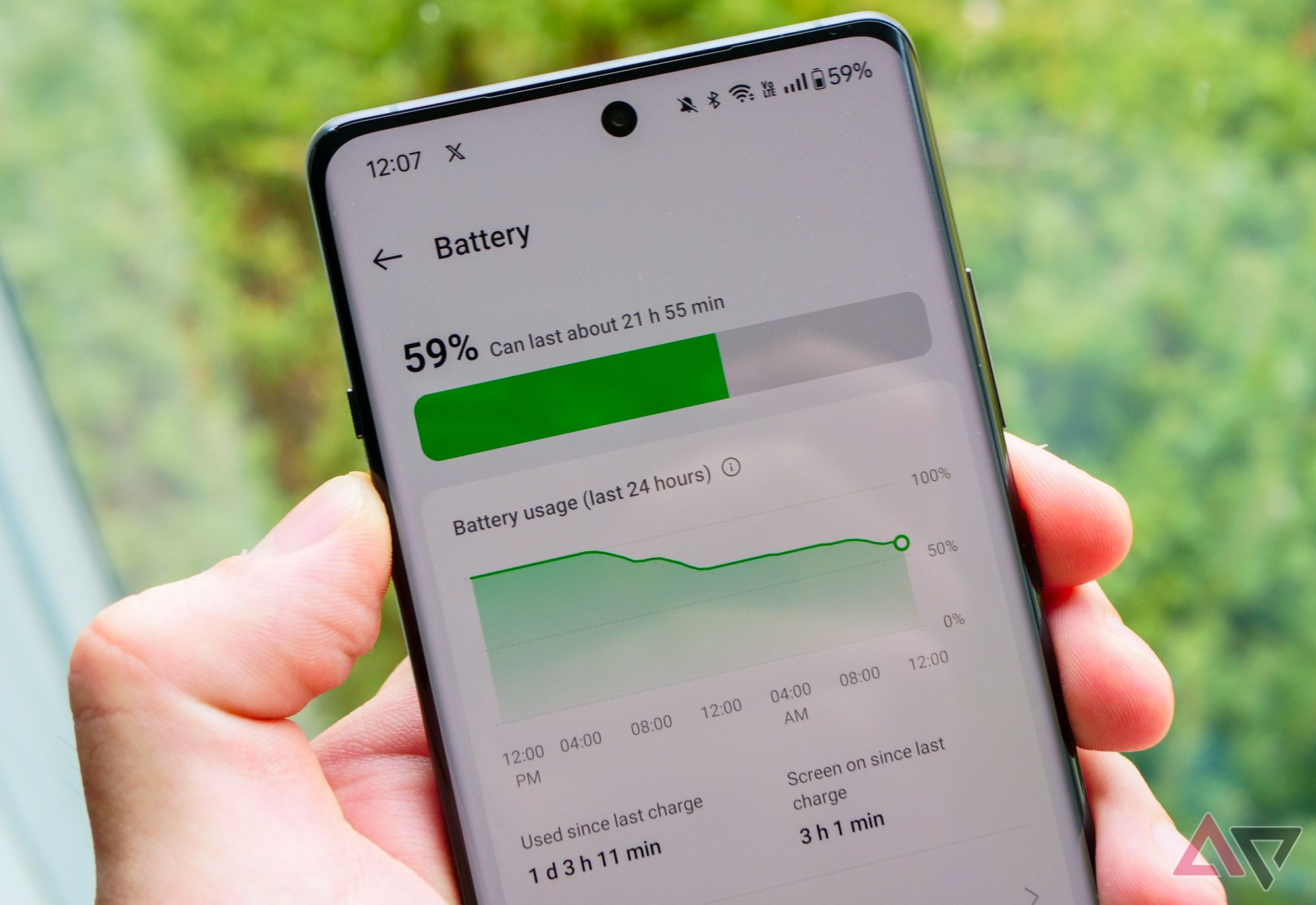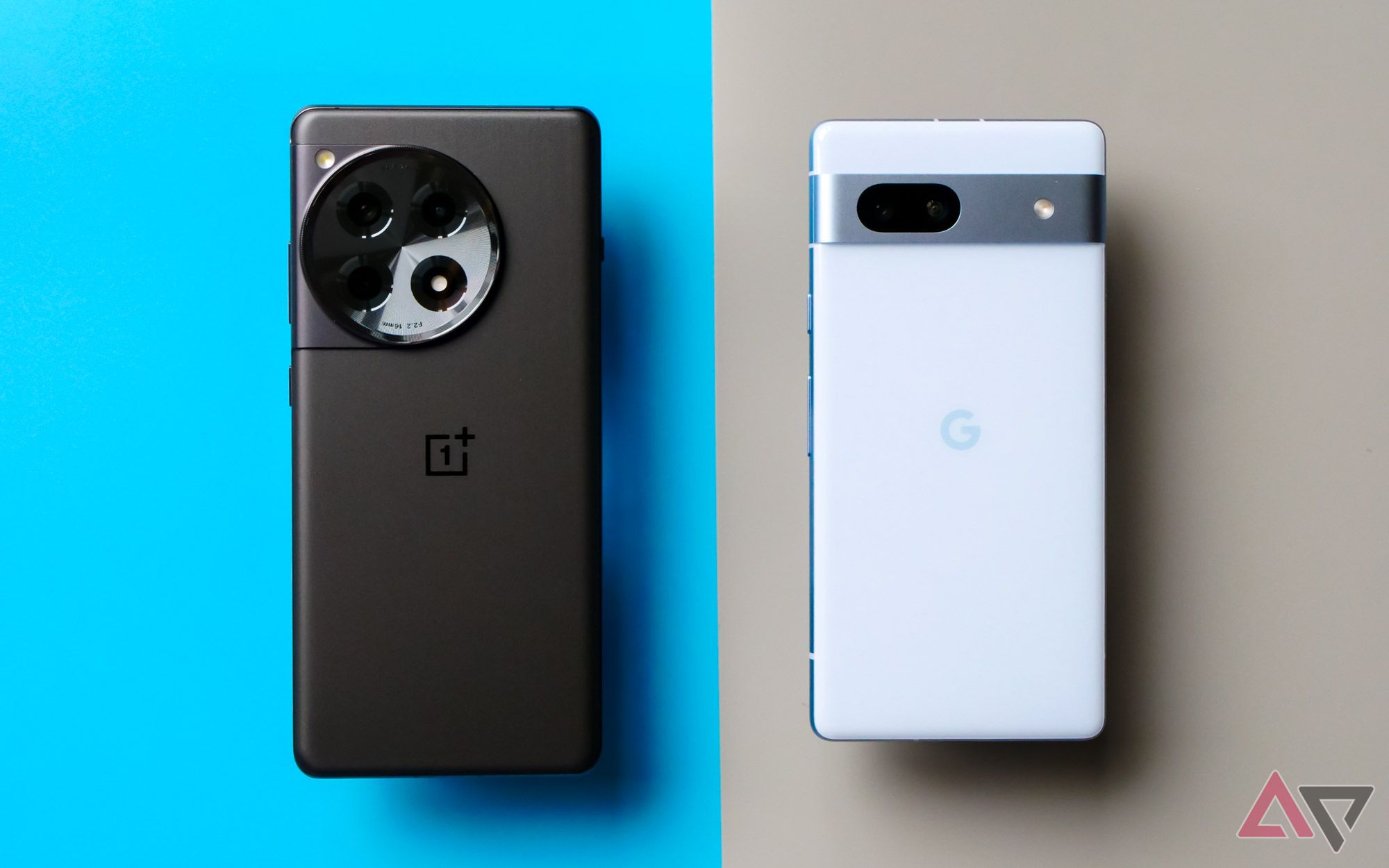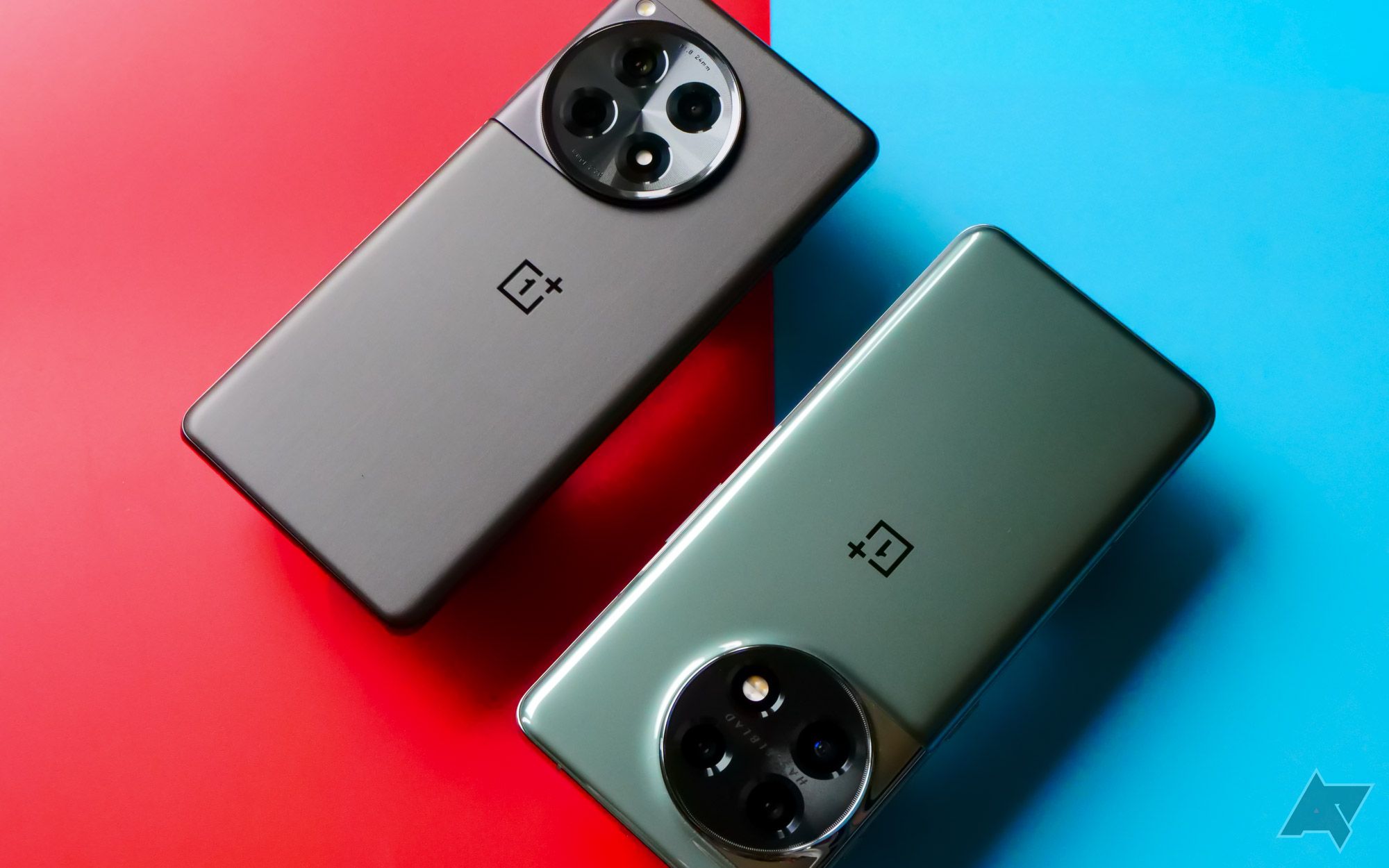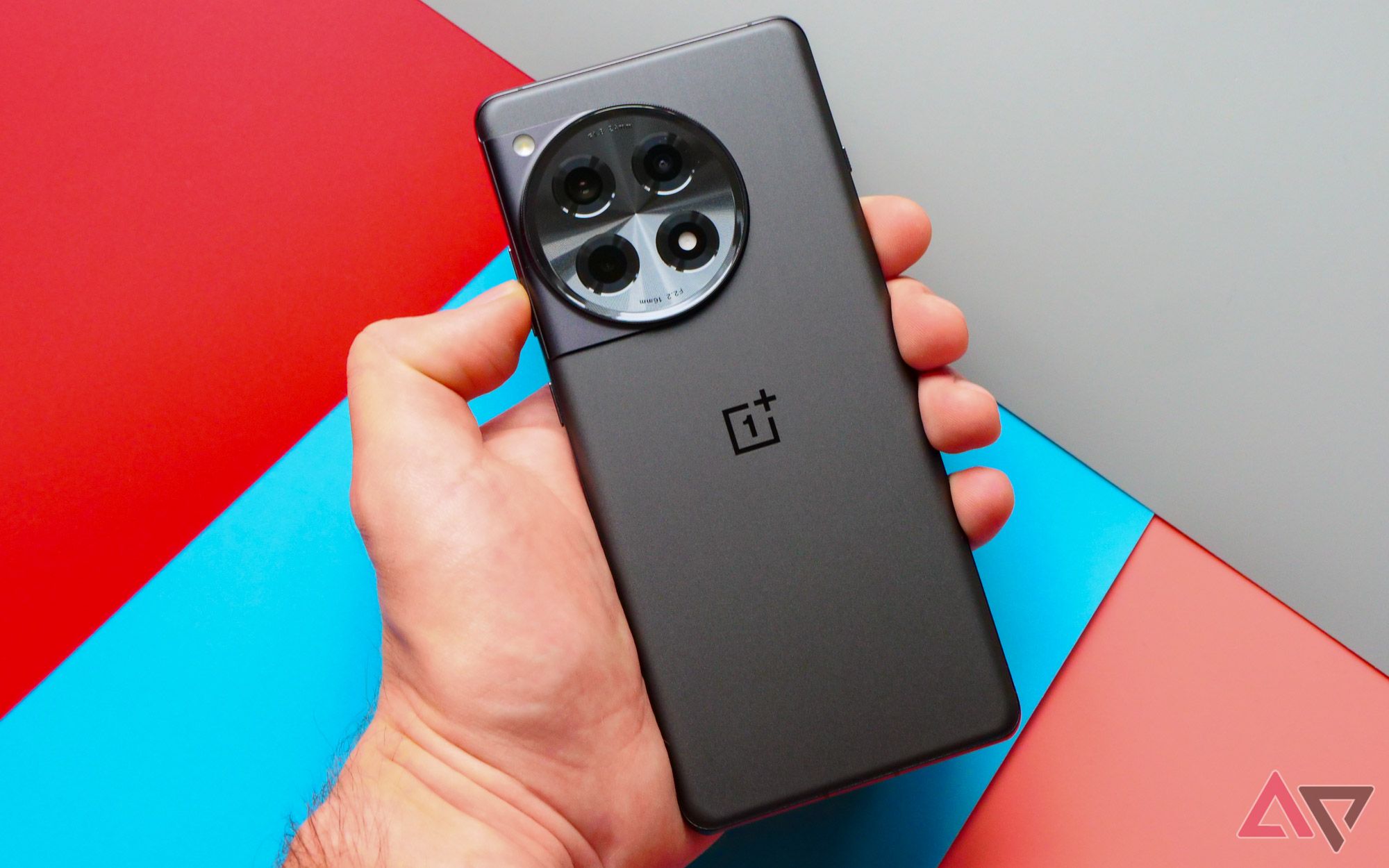No smartphone is perfect for everyone. For some, a budget Android phone is all they need to send texts or navigate with Maps. For others, power is everything: the newest processor, the biggest screen, the most impressive camera. Even dating back to its earliest smartphones a decade ago, OnePlus has always done its best to mix the two, making compromises between power, performance, and price to keep the cost lower than its rivals. And though the brand hasn’t always stayed true to this promise, lineups like the Nord series have done their best to keep the dream alive.
But the OnePlus 12R is different. It’s not just taking last year’s flagship and dropping it to a new, lower price. The first R-series device to launch in North America combines everything that worked about the OnePlus 11 while keeping some of the upgrades brought with this year’s OnePlus 12. And if the company’s “flagship killer” strategy was always about compromises, I’d say it made the right ones this time around.
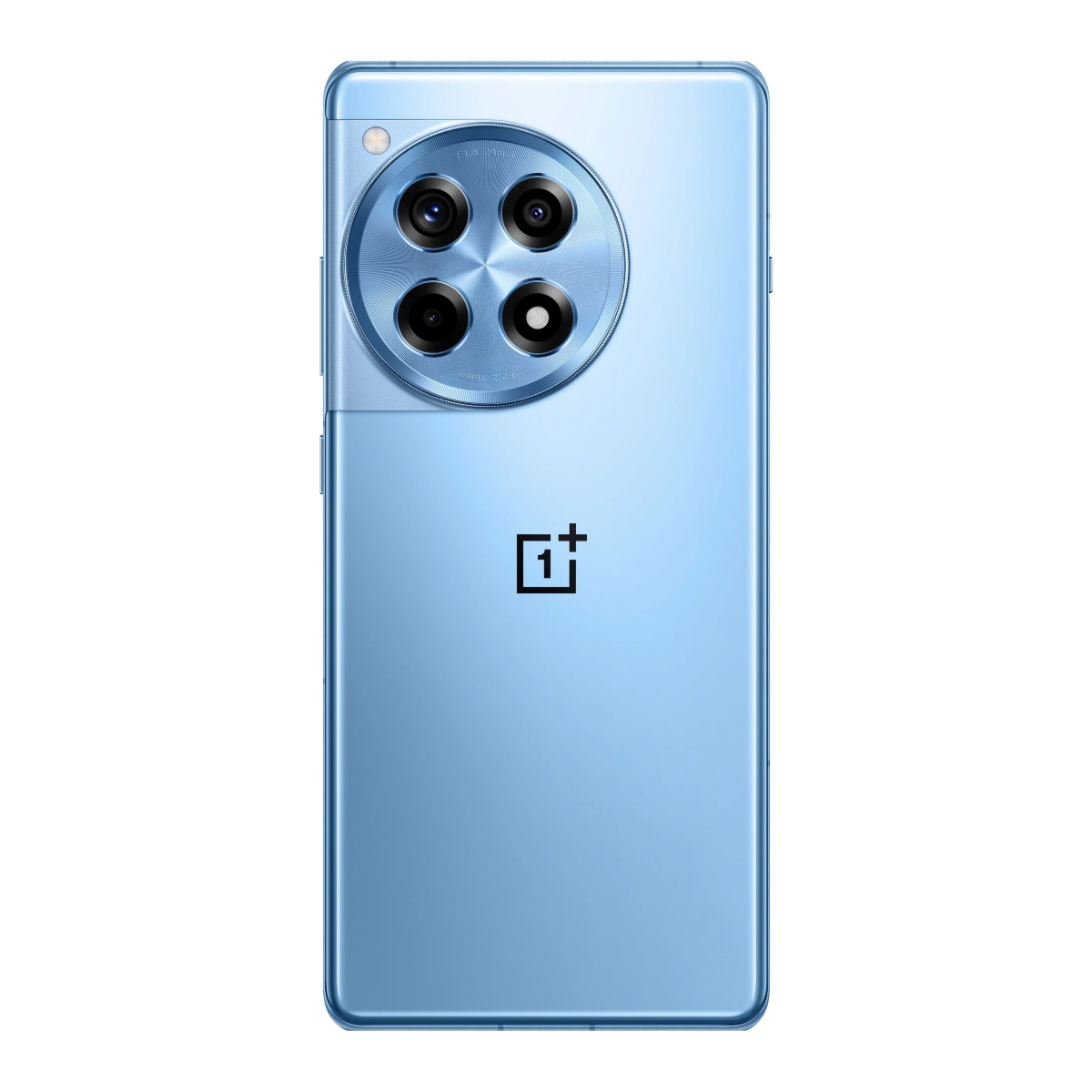

OnePlus 12R
Editor’s Choice
The OnePlus 12R has completely shaken up the midrange space, offering fantastic performance, an incredible display, and long-lasting battery life in a package so affordable, it might just make you say “A-series who?”
- SoC
- Snapdragon 8 Gen 2
- RAM
- 8GB or 16GB LPDDR5X
- Storage
- 128GB or 256GB
- Battery
- 5,500mAh
- Ports
- USB-C 2.0
- Operating System
- Android 14 with OxygenOS 14
- Front camera
- 16MP
- Rear camera
- 50MP, f/1.8 main; 8MP, f/2.2 ultrawide; 2MP, f/2.4 macro
- Connectivity
- NFC
- Dimensions
- 163.3 x 75.3 x 8.8mm
- Colors
- Cool Blue, Iron Gray
- Display type
- LTPO AMOLED, 120Hz
- Weight
- 207g
- Charge speed
- 80W wired (100W international)
- IP Rating
- IP54
- Price
- From $500
- Stylus
- No
- Display dimensions
- 6.78″, 19.5:9
- Display resolution
- 2780 × 1264
- Charge options
- USB-C SuperVOOC wired
- SIM support
- Dual Nano-SIM
- Cellular connectivity
- Sub-6 5G, LTE
- Wi-Fi connectivity
- Wi-Fi 7
- Bluetooth
- Bluetooth 5.3
- Excellent performance
- Top-tier display
- Multi-day battery life
- All of this in a package starting at $500
- Only IP64-certified
- Camera quality is lackluster
- Only three years of OS upgrades
- Curved screens are so 2021
Availability and network
Just don’t look for it in carrier stores
The OnePlus 12R is available through Amazon, Best Buy, and the company’s own storefront. It starts at $500 for the 8GB/128GB configuration, while the 16GB/256GB variant I’m reviewing will run you $600. Buying through the OnePlus store is probably your best bet since you can take advantage of its $100 guaranteed trade-in offer on any phone, regardless of condition. That brings the entry price down to just $400, nearly unheard of for a phone with these sorts of specs.
As with the OnePlus 12, this phone should work on all three carriers in the US, along with the vast majority of MVNOs across both 4G and 5G networks. I wouldn’t expect to see mmWave on Verizon, but you can pretty safely slip any SIM card into this device without having to worry about your connection. Despite some pretty fantastic carrier support, you won’t find this in your local T-Mobile store, which could hold what is otherwise a pretty fantastic option from finding real success.
Design and display
Flagship-worthy in practically every way
If you’ve seen a recent OnePlus phone that doesn’t unfold, you’ve seen ’em all. From the OnePlus 10 Pro onwards, the company’s non-Nord slabs have basically all used the same design language. Curved edges, black and green colorways (in most cases), and a signature watch-esque circular camera bump (previously a square on the 10 series). The OnePlus 12R reminds me of the OnePlus 10 Pro in particular. The black finish on my model isn’t identical in style, but the slippery texture is much closer to the company’s 2022 flagship rather than the grained finish on the cheaper 10T model that followed it.
Using smaller sensors and, overall, cheaper camera hardware — more on that later — means the camera bump is far slimmer than on the last couple of devices, though, which makes it feel a little more integrated with the phone than last year’s OnePlus 11. This phone also follows in its namesake’s path, moving the volume rocker to the right side of the device above the power button in a very Samsung fashion. The mute switch can still be found on the left side; I wonder if it’ll ever become an Action button-type clone instead.
The mute switch, and below it, the scraped-up left side.
I don’t want to undersell how easy it is to have this phone slip right out of your hands like a bar of soap. The left side of my unit is covered in dings and scratches thanks to an unfortunate drop out of my pocket while I was sitting down, an unfortunate consequence of the lack of a case in the box. Still, the overall design here is nice enough, especially at this price point. It reminds me quite a bit of last year’s Moto Edge+, but at a much cheaper price point.
The OnePlus 12R display is effectively every bit as good as the screen on the standard OnePlus 12. At 6.78 inches, it’s just a touch smaller, but it’s still capable of reaching 1,600 nits of brightness in high brightness mode and includes that (mostly nonsense) 4,500 nits of peak brightness rating. I love pretty much everything about this screen outside of its curves, a problem I hope OnePlus fixes with its 2025 lineup. It’s fast, sharp, and plenty colorful, perfect for watching movies or just scrolling through (insert your Twitter replacement of choice). It feels like a screen from a phone twice as expensive as this, which feels like the highest compliment I can offer.
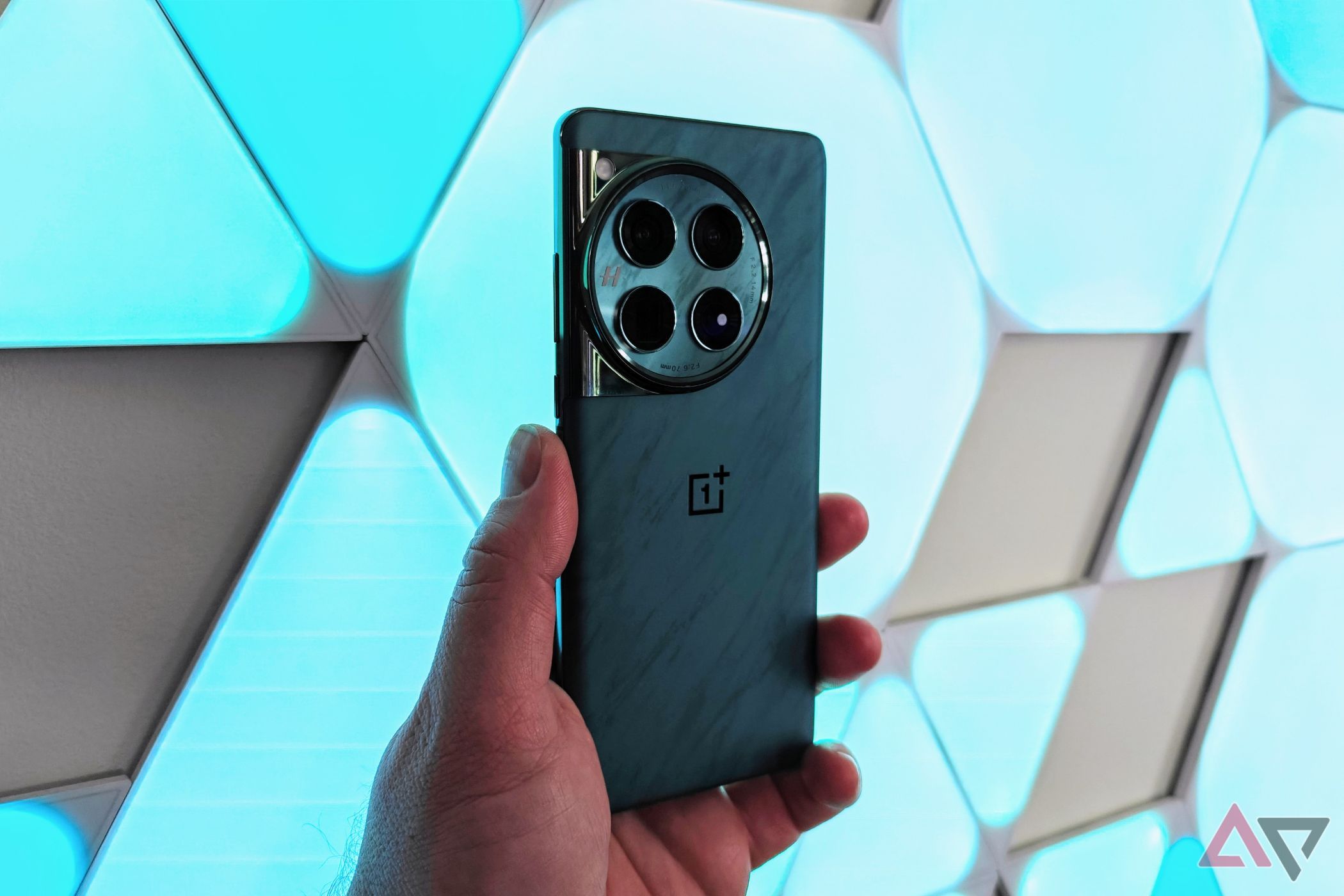
OnePlus 12 review: All flagship, no AI
Looking for something more powerful? The OnePlus 12 might have you covered.
Other hardware and what’s in the box
Some nice additions, some not-so-nice
One of the benefits of jumping between phones so often — say, when two companies decide to time their 2024 flagship launches together — is how easy it becomes to notice some of the smallest differences between hardware. Case in point: face unlock on the OnePlus 12R is leagues better than what you’ll find on Samsung or Google phones. It’s not only faster, but it works in lower-light environments where the other two just can’t hold up. It does lack the Class 3 biometrics to support things like banking apps, though, so Google can claim at least one win here. Samsung, not so much.
I don’t remember the mute switch catching on my pocket as much as it did with the OnePlus 12R, and I can’t figure out why. Multiple times I’d be surprised to hear an alert go off in the background, despite having previously kept the phone on silent or vibrate. Something to watch on this phone, particularly before you head into a theater to figure out who the real Agent Argylle is. (I am excited for this joke to be incomprehensible in three months time.)
Both the speakers and the haptics are fine — nothing to write home about, but far from the worst you’ll find in the mobile scene today. Both have come a long way on flagship Android phones in the past few years, and I’d say the OnePlus 12R would’ve ran with the best of ’em if this was still 2021. Still, unless you’re coming from recent, high-end hardware from Google, Samsung, or Apple, I don’t think you’ll be dissatisfied.
I really wish OnePlus would at least meet IP67 dust and water resistance on its 12-series of smartphones, but we’re stuck with IP64. That still means it’ll likely survive a rainstorm, and the 12R keeps the improved touch sensitivity found on its more expensive brother when wet, but improved weather resistance feels like table stakes. At the very least, it’s a little more excusable on this cheaper model.
Inside the box, you’ll find the phone itself, the usual assortment of paperwork, a fast charger with a USB-A to USB-C cable, and a SIM tool. No case this go-around, as I mentioned earlier, and considering the not-so-strong selection of third-party options you’ll find on Amazon, is a pretty big bummer.
Software and performance
Predictable, but is that so bad?
It’s no secret that OxygenOS is a shell of what it once was, and that continues with its Android 14 build. Put aside all of the buzzwords filling up my reviewer’s guide — Trinity Engine, RAM-Vita, and so on — and you’re left with a skin that, honestly, mostly fades into the background after a couple of days of use. I don’t love the OnePlus experience, but once you get your settings in the right place, it actually feels more like proper Android in some ways than One UI. At least OxygenOS has a vertical app drawer.
Still, if you’re looking for something that feels a little more in line with Material You, you’ll be better off looking to the Play Store for a good launcher alternative. Though, I will say, the OxygenOS home screen has me feeling a little nostalgic for the days of silly home page transitions, offering options like Cube and Flip that’ll feel familiar to anyone who frequented XDA forums back in the day. What can I say — I’m growing soft in my old age.
As with the OnePlus 12, the most notable thing about OxygenOS 14 is the absolute lack of AI-laden gimmicks meant to compete with Google and Samsung. I have no doubt that’ll change (in fact, in China, it already is), but for now, this phone is just, well, a phone. Any AI tools will have to come through apps like ChatGPT, and frankly, I think that’s alright.
Really, the biggest downside to OxygenOS is the lackluster software support offered by OnePlus. The 12R will include just three years of OS upgrades and four years of security patches — that’s Android 17 and 2028, respectively, for those keeping track at home. In comparison, Google and Samsung now offer seven years of full OS updates for their latest flagships, a policy that could arrive on the Pixel 8a later this year. That puts the OnePlus 12R behind the times, though certainly not enough for me to write off the phone entirely.
The Snapdragon 8 Gen 2 powered virtually every Android flagship last year not made by Google, and that makes the OnePlus 12R’s performance as expected as it is excellent. Yes, Qualcomm has a newer chipset available right now, but if you’re just focused on core performance — using apps or playing games — you won’t notice a big difference between the two. The Snapdragon 8 Gen 2 can handle anything on the Play Store right now with flying colors, and it does so without breaking a sweat.
Camera
Sometimes “fine” is good enough
The OnePlus 12R has a perfectly middle-of-the-road 50MP f/1.8 main sensor, capable of capturing binned 12.6MP photos good enough for social media but not much else. Surprisingly, the thing I miss most compared to other OnePlus devices isn’t a higher quality sensor, but the Hasselblad color profile, which you won’t find on the R-series. Even without having the two phones side by side, it’s pretty obvious that the pop delivered by the OnePlus 12 or Open just isn’t here. Even in sunny conditions — a rarity this time of year — everything looks a little washed out or, in some cases, overexposed.
But I tend not to expect much from any camera lineup that includes a 2MP macro lens, and the same goes with my experience shooting with the OnePlus 12R. These photos can’t compete with what you’ll see on the Pixel 7a — or, presumably, its upcoming successor — but they’re more or less in line with last year’s Galaxy A54. Samsung’s oversaturated processing might be enough for it to claim the crown anyway, but that’s easily fixed on this phone in a matter of seconds. And in ideal conditions, I think most people will be happy enough. At the very least, it struggled with motion far less than phones that cost nearly three times as much.
Lens flares seem to be a real problem with the main sensor, though. I noticed them appearing in a couple of my shots as I was out on a chilly morning walk, but they became much more apparent when sorting through samples for this review. The ultrawide lens doesn’t seem to be as susceptible, but considering you won’t use it as much as the 50MP wide, it’s a bit of a bummer.
Despite not having any kind of telephoto lens, the OnePlus 12R keeps 2x and 5x as default zoom options alongside the 0.6x dedicated ultrawide sensor. At a 2x crop, you still retain enough detail to get a decent shot, but things start to look pretty noisy and blurry at 5x. Zoom all the way in at 20x and you’ll think you’re looking at a watercolor painting, if you can figure out what you’re looking at at all. The 8MP f/2.2 ultrawide lens does a fine enough job of recreating a similar color science as the main lens, but at just 112-degrees, it’s not quite as ultra of an angle as I’d like.
The final shot shows moving cars on a busy street, handling motion far better than the Galaxy S24 series.
Meanwhile, low-light shots seem acceptable enough for this price range. It didn’t do a half bad job capturing my rain-soaked street, though truly dark environments away from any light sources become muddy pretty quick. Finally, the 16MP f/2.4 selfie camera is… fine. I don’t think I have much to say about it, good or bad, which is usually the most you can ask for from a phone in this price range.
Battery life
You cannot kill the OnePlus 12R
Last year’s OnePlus 11 was already a battery champ, so what happens when you squeeze an even larger battery into a chassis with very similar specs? You get a multi-day device, a phone that should eek out a day and a half’s worth of usage on a single charge for even the busiest of road warriors. For the rest of us, expect something closer to two or even three days between charge cycles, as standby time is similarly excellent. This isn’t new territory for OnePlus, but the move to a 5,500mAh battery — while only gaining two grams of weight over the company’s 2023 flagship — is absolutely notable.
A collection of battery samples.
Once you do need to charge your phone, you’ll be greeted with the now-standard OnePlus SuperVOOC charging experience. With its 80W charger (and, of course, 100W everywhere else), the phone’s capable of charging to full in around 30 minutes. That alone is appealing on paper, but I think it’s equally impressive when you break it down even further. I plugged the OnePlus 12R in for just three minutes and managed to go from 19 percent to 33 percent. Three minutes. 180 seconds. Please, Samsung, Google, get with the times.
The obvious sacrifice here is wireless charging, something that only just made a comeback with this year’s OnePlus 12. Obviously, I prefer more features over less, but if something had to be cut to hit $500 — not to mention to add an additional 500mAh of battery — I’m fine with this. Your mileage may vary, but when you’re barely thinking about a charger to begin with, Qi pads start to feel a little meaningless anyway.
Competition
Two paths diverged
The best part about OnePlus and Google focusing on such different elements in their respective smartphones is, well, when it comes time to decide between the two, your decision is made pretty simple. Buy the Pixel 7a if you care about software purity, camera performance, or absolutely need wireless charging and IP67 certification. I’m not here to pretend those aren’t meaningful features, particularly the improved water resistance offered by Google, but I also think the OnePlus 12R might be the more complete package for a lot of people.
Whether it’s the display quality — not just in resolution, but in brightness and overall quality — battery life, charging speeds, or just pure performance, the OnePlus 12R is bound to impress a lot of buyers. This is undoubtedly the phone to pick if you play a lot of mobile games on Android, or watch a lot of movies, or just prefer a larger screen. I found the Pixel 7a’s battery life to be absolutely laughable at times, so if you don’t want to worry about keeping a charger around, once again, the 12R is probably the right pick.
All of this could change with the Pixel 8a when it launches (presumably) this summer, but considering the track record Tensor has built for itself, I wouldn’t blame anyone looking to stick with a chipset as tried and tested as the Snapdragon 8 Gen 2.
The OnePlus 11 continues to be sold through Best Buy, Amazon, and the OEM’s own storefront, begging the question, why not just pick up the 2023 flagship instead. Well, Amazon price tracking shows that the OnePlus 11 actually hasn’t been on sale much since the holidays, and even then, it only dropped to $550. Hasselblad color tuning aside, I’m not sure there’s much of a reason to pick up the older phone unless you see a killer deal — I’m talking $400 or less. With a larger battery and a much brighter display, I’m picking the OnePlus 12R every time.
Should you buy it?
This is my new go-to recommendation for most Android fans on a budget. I fully understand that, for a select group of people, the clean Android build and excellent camera performance offered by something like the Pixel 7a is simply unbeatable. But with the OnePlus 12R, the company is clearly chasing after powerhouses like the Samsung Galaxy S24 Ultra, and frankly, they’re coming surprisingly close for a fraction of the cost.
No, the camera can’t quite compete with smartphones twice the price, but I’m not sure they need to. For anyone who has spent the last several years missing the OnePlus of a decade ago, the company offering high-end performance for as low of a price as possible, I’m not sure what more you could ask for than the OnePlus 12R. And to take it just one step further, I’m not sure how companies like Samsung and Google are going to be able to compete in this price range without shaking things up. This is the new standard for $500 smartphones — everyone else is going to have to take note.

OnePlus 12R
The OnePlus 12R is the cheaper sibling of the OnePlus 12, delivering almost the same experience as the flagship at a lower price point. It achieves this using a Snapdragon 8 Gen 2 chip, a 6.78-inch FHD+ OLED display, and a beefy 5,500mAh battery.
Source link

